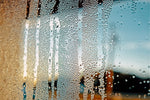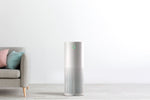The Truth About PCO Air Purifiers: What They Don't Tell You About Photocatalytic Oxidation
Navigating the complex world of air purification technologies requires discernment and knowledge. As innovation paves the way to cleaner air, the appeal of new methods may often mask their inherent risks.
This article explores the potential shortcomings of Photocatalytic Oxidation (PCO) technology and illustrates why HEPA + Carbon filtration is the superior choice.
Unraveling the Complexities: HEPA + Carbon vs. PCO Air Purifiers
In the pursuit of air purification, the decision between HEPA + Carbon filtration and Photocatalytic Oxidation (PCO) becomes central. Below, we probe into the reasons why PCO may be a choice that requires caution:
Drawbacks of Photocatalytic Oxidation (PCO):
- Ozone Exposure: PCO generates ozone, a molecule that can threaten respiratory health.
- Secondary Pollutants: Unforeseen byproducts may carry unknown health risks.
- Proven Technology: PCO is less established and lacks the track record of traditional methods.
- Health Concerns: Potential risks arise from the presence of unknown compounds.
- Unpredictable Efficacy: PCO's effectiveness varies, leaving gaps in pollutant coverage.
Examining the Risks: The Hidden Dangers of PCO
Selecting an air purifier means placing health and safety at the forefront. PCO presents several concerns that warrant a closer look:
Ozone Exposure: More Than Just a Drawback
Among the myriad issues associated with PCO technology, ozone exposure stands out as an alarming risk. Although ozone protects us from UV radiation in the atmosphere, at ground level, it becomes a respiratory hazard.
The very purifiers designed to enhance our air quality may, ironically, produce ozone as a byproduct. This contradiction creates a situation where the pursuit of cleaner air results in potential health threats.
Ozone's Hidden Costs
Inhaled ozone can inflame lung tissues, causing symptoms that range from irritation to serious respiratory diseases over time. Beyond affecting human health, ozone can also damage materials, tarnish fabrics, and even hurt indoor plants.
Making an Informed Choice: Health Above All
Considering these substantial risks, choosing the right air purifier becomes a crucial health decision. Focus must remain on solutions that safeguard the well-being of everyone indoors.
HEPA + Carbon: The Proven Way Forward
Innovation's promise must be balanced against the potential dangers it might pose. PCO's ozone generation stands out as a major concern. The best course of action is clear: choose a solution like HEPA + Carbon filtration, which combines effectiveness with safety.
Comparison of HEPA + Carbon Filtration vs. Photocatalytic Oxidation (PCO)
In the quest for pristine air quality, understanding the differences between available technologies is paramount. The table below outlines key features and drawbacks of both HEPA + Carbon Filtration and Photocatalytic Oxidation (PCO):
| Feature / Concern | HEPA + Carbon Filtration | Photocatalytic Oxidation (PCO) |
|---|---|---|
| Ozone Exposure | No ozone emission | Generates ozone; respiratory risks |
| Secondary Pollutants | Controlled & predictable | Unintended byproducts; health impacts |
| Proven Technology | Established, decades of proven results | Less established; evolving understanding |
| Health Concerns | Well understood & regulated | Potential risks from unknown compounds |
| Efficacy Across Pollutants | Consistent effectiveness | Variable; might not cover all pollutants |
Conclusion
Your health and well-being should never be compromised. When it comes to air purification, choose a path that aligns with your core values. At Jaspr, we steadfastly support solutions that protect both your indoor environment and those you care about. Embrace the tested, trusted path to excellence with HEPA + Carbon filtration. Breathe in the confidence of a healthier, safer indoor space.
Additional Resources:
- Certain air filters using photocatalytic oxidation have dangerous by-product
- What are the adverse health effects from exposure to ozone?
Back to Blog



